TAMIL WEDDING: RITUALS, CEREMONIES, ATTIRE & MORE!
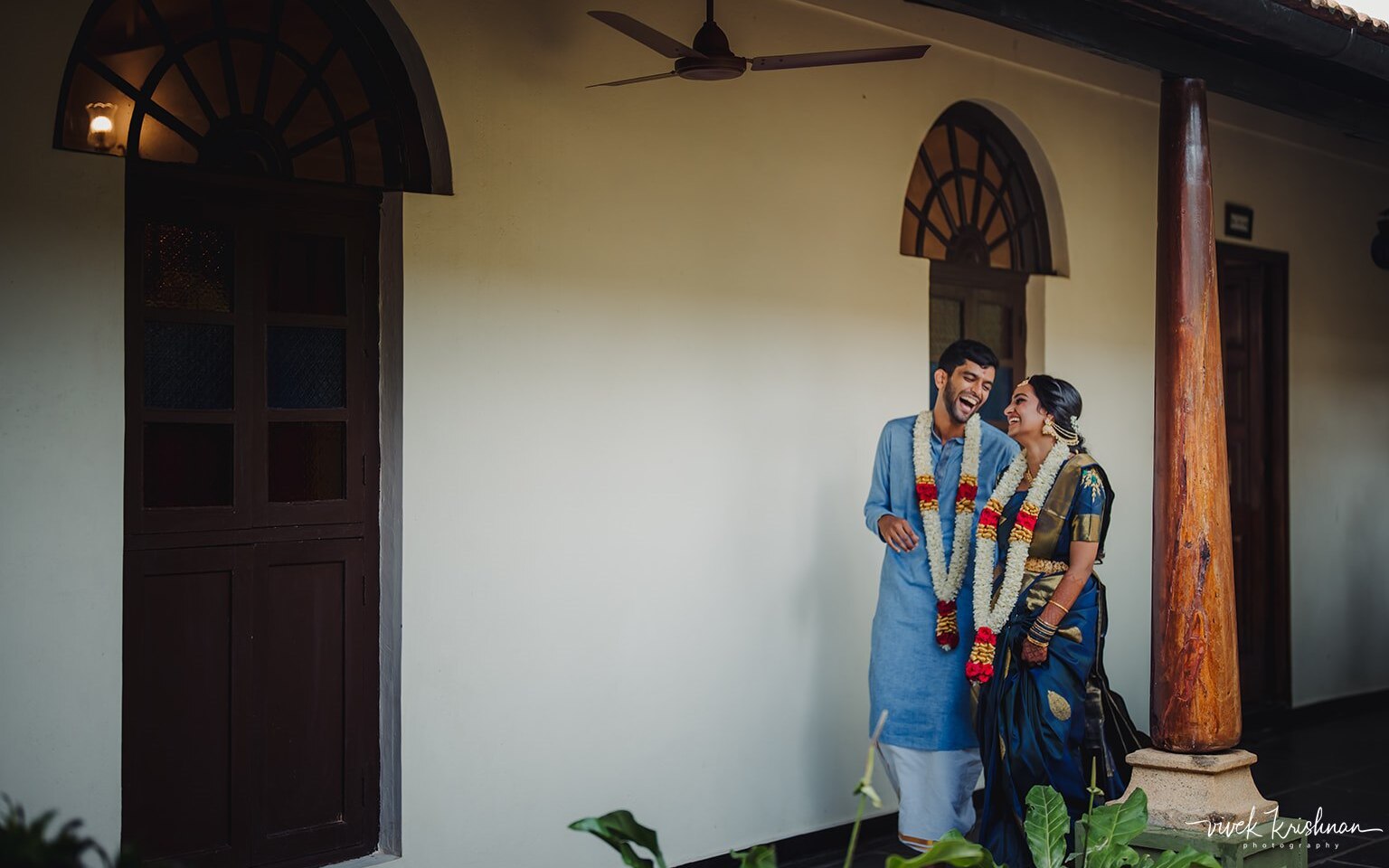
Welcome to the vibrant world of Tamil weddings, where tradition, culture, and celebration unite to create an experience. The ceremonies are not just about the union of two individuals, but also about the merging of two families, their values, and their traditions. From the elaborate Kalyanam ceremony to the playful and light-hearted moments of the Oonjal ceremony, every ritual is a testament to the depth of cultural heritage. Though some ceremonies are specific to certain sects of people, this article is intended to provide a generic guide for Tamil weddings.
Groom’s attire
The traditional Tamil groom wears a two-piece attire called Veshti and Angavastram, usually made of silk or puttu fabric. The Veshti forms the lower part, worn as a dhoti or lungi, paired with a white shirt or Salvai and an Angavastram draped around the neck. A Thalaip, resembling a turban, adorns his head. Modern options like Sherwanis, Kurtas, and Indo-western outfits are also popular. Jewelry like gold chains and earrings, real or clip-on, are worn.
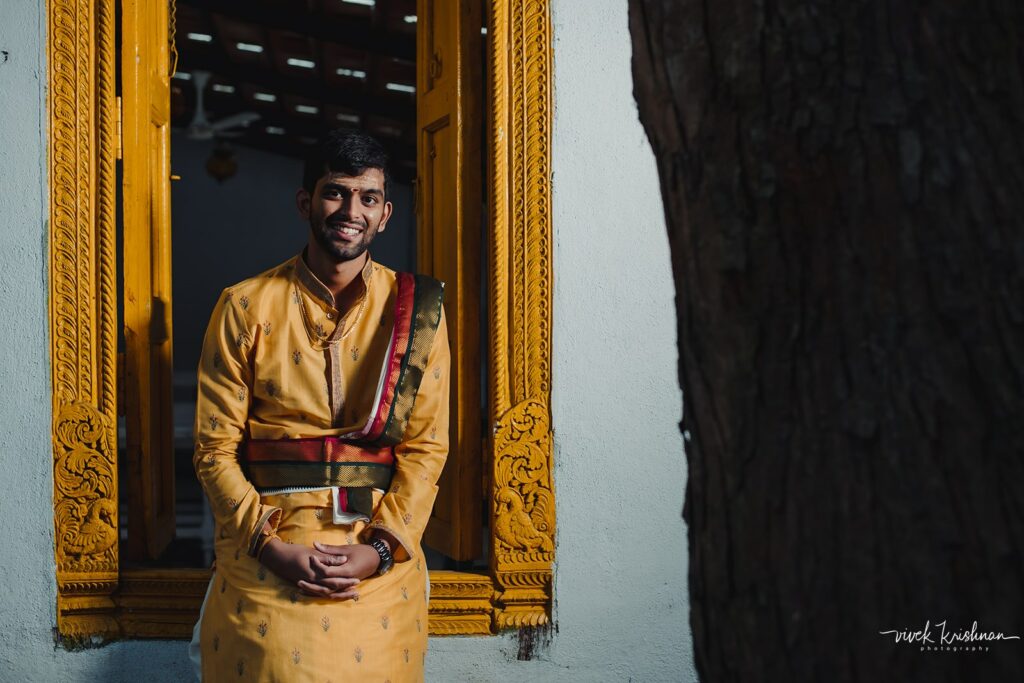
Bride’s attire
The Tamil bride is adorned in Kanjeevaram Silk sarees, typically 6-9 yards long based on tradition. Adorned in bright hues with intricate gold-threaded borders, a few wear the saree in the Madisar style. Her hair is done in a plait and bun adorned with white and orange flowers. The bride wears heirloom gold and precious stone jewelry, including the fertility symbol Jadainagam and solid gold Oddiyanam for garment support. Layers of necklaces, gold bangles, diamond nosepins, and Nethi ornaments grace her look for various ceremonies.
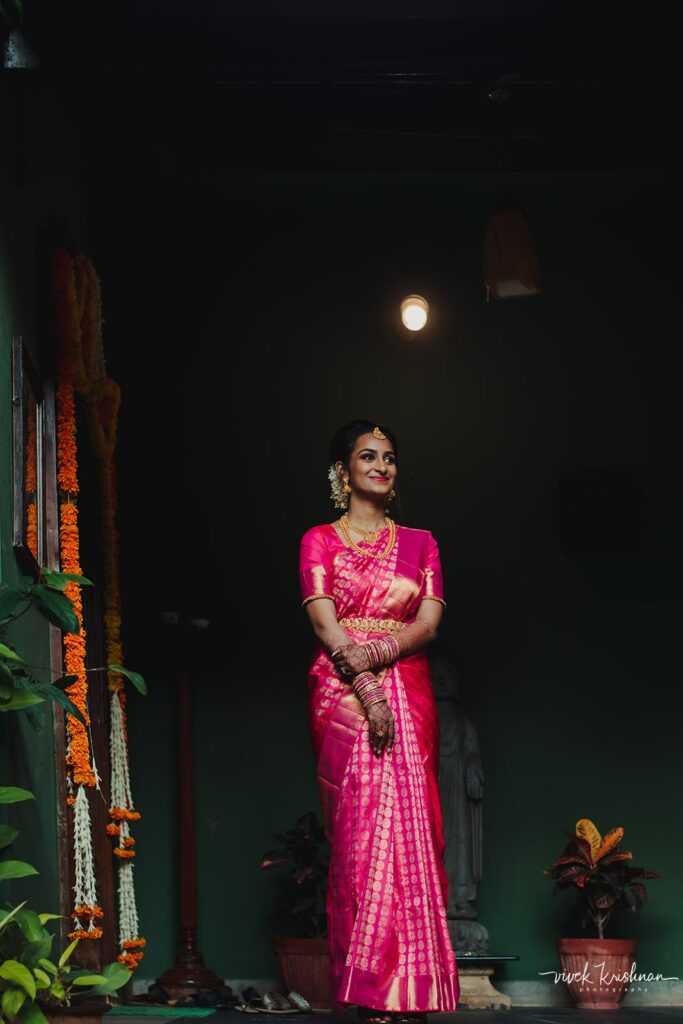
Pre-wedding ceremonies
Panda Kaal Muhurtham
One of the pre-wedding rituals in a Tamil wedding involves offering prayers to the divine and seeking blessings for a harmonious union. Thus, as they step into the future, hand in hand, they carry with them the prayers and well-wishes of those who hold them dear.
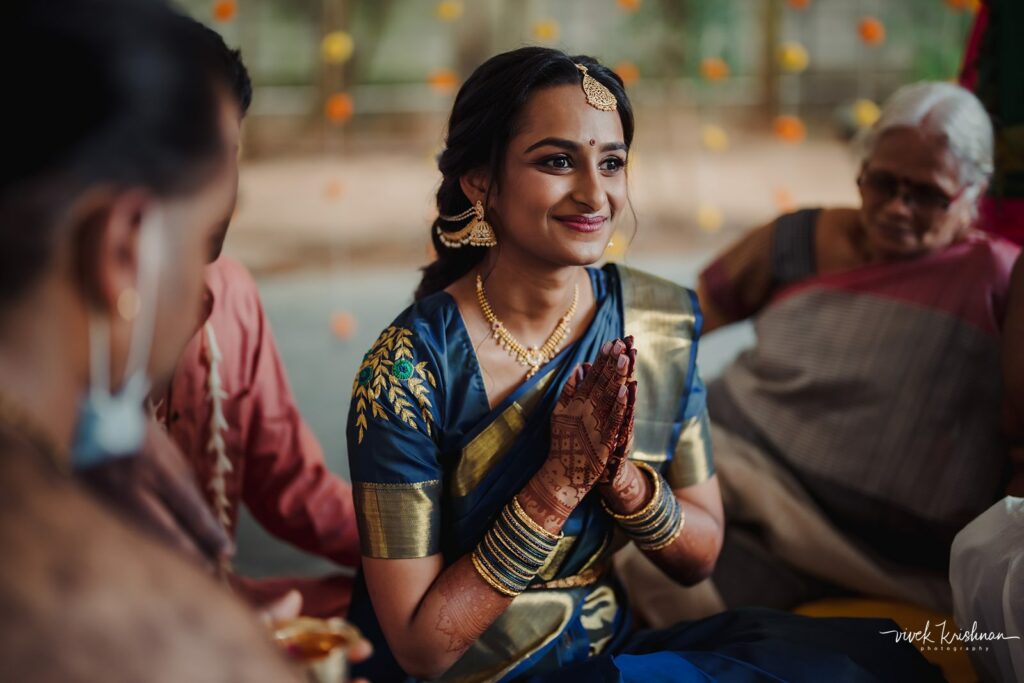
Sumangali Prarthanai
Traditionally Sumangalis are married women. During this ritual, married relatives and cherished friends of the bride, who have embraced marital happiness, come together. This ceremonial tradition brings older women together to seek ancestral blessings and heartfelt aspirations for the bride’s path ahead. Guided by the host of the ceremony, they partake in a Tamil tradition—a feast, presented upon banana leaves. In this moment, the sumangalis collectively bless the bride and her new journey.
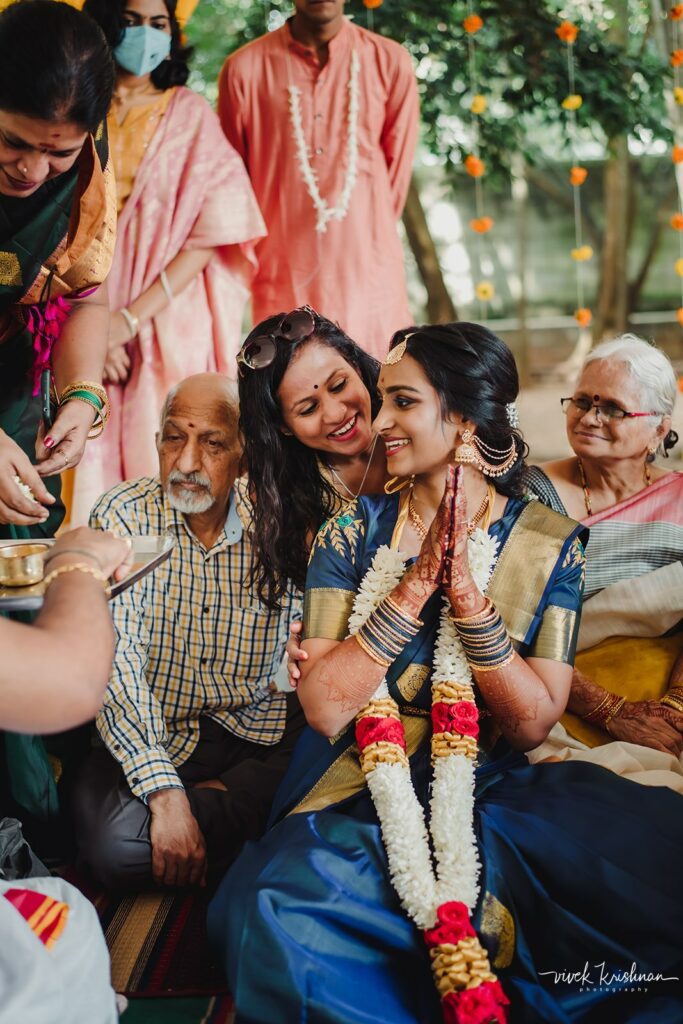
Palligai Thellichal
This Ritual is extremely unique to Tamil weddings. It is performed as a way of blessing the couple. The Ritual witnesses five to six married women come together to color many earthen pots to fill them with a mixture of yogurt and nine different seeds which will be later immersed in water to symbolically seek good luck. Kolam popularly known as Rangoli is decorated inside the house.
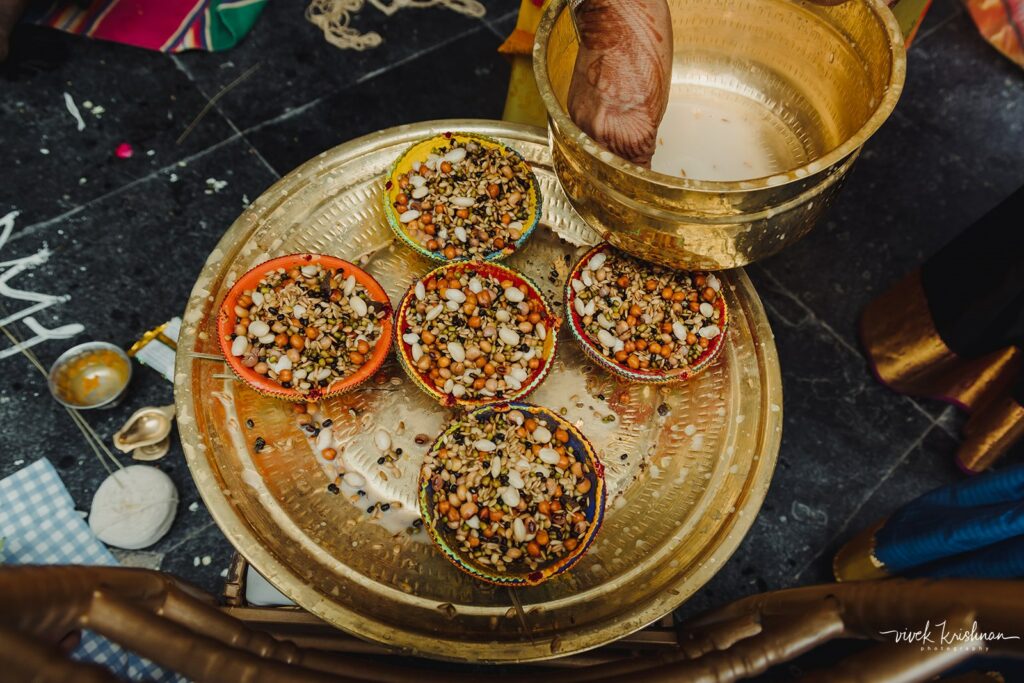
Naandi Shrardham
This tradition is generally followed by the groom. The groom’s family visits the bride’s family to be greeted with a shower of rose water. The groom is spoilt by the bride’s family with sweets made by the mother-in-law. A set of ten brahmins are invited for a feast to seek the blessings of the almighty and to collectively pacify their ancestors.
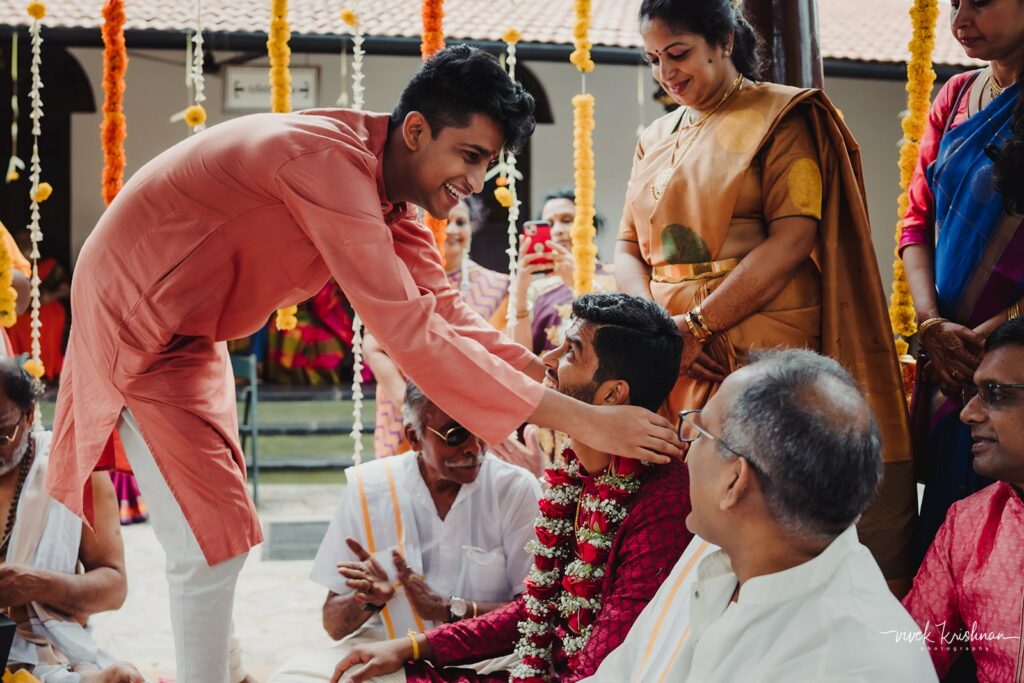
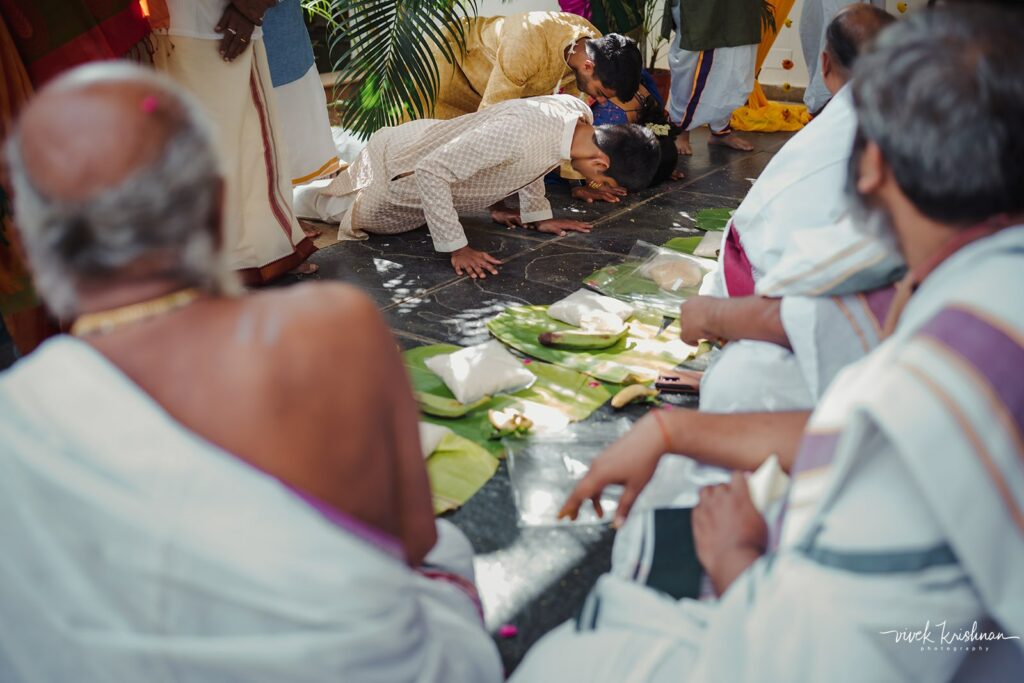
Vrutham
Vrutham is a tradition performed a day before the main wedding day which represents a transition of the groom from bachelorhood to a married one. A thread decorated with turmeric finds its place on the groom’s hand in a way to ward off evil energy. A similar process is carried out with the bride as well.
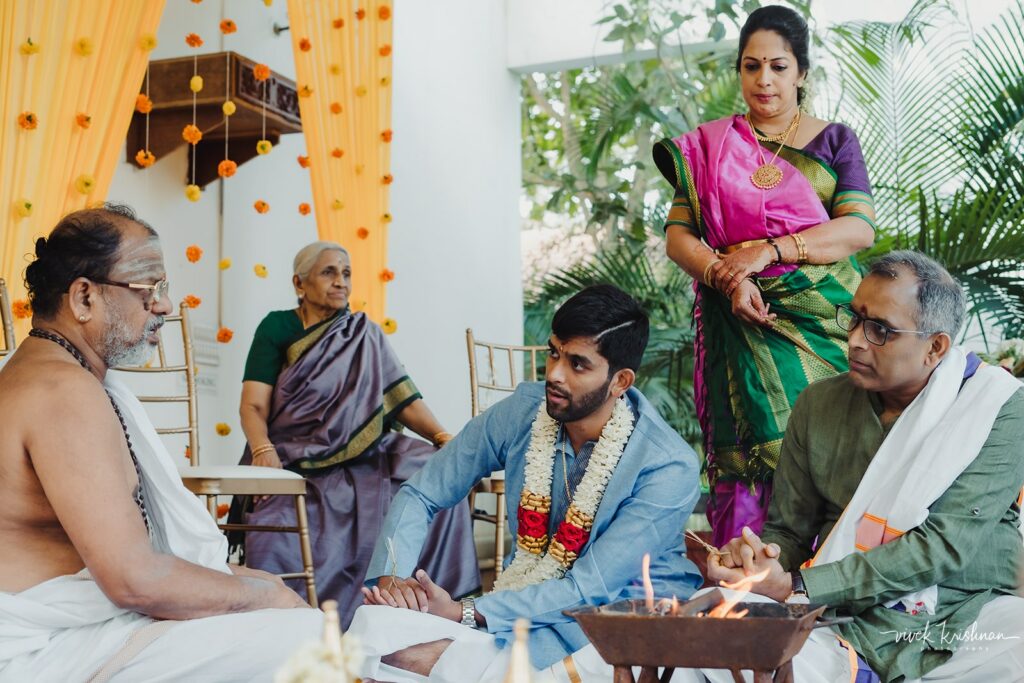
Nichayathartham
An official engagement ceremony but with a twist. It starts with a prayer to Lord Ganesh for blessings, followed by the groom’s family gifting the bride a saree and jewelry. Sandalwood paste and vermillion are applied to her forehead, symbolizing her transition.
Sumangalis from both families blesses the bride, adding auspicious items along with her saree like rice, fruits, and flowers. An arti is performed, and a floral garland is tied around her waist. The bride’s family gifts the groom, and both change into these new clothes.
This ceremony might include a ring exchange, sealing their commitment. Overall, the engagement lays the foundation for the wedding, blending tradition and union.
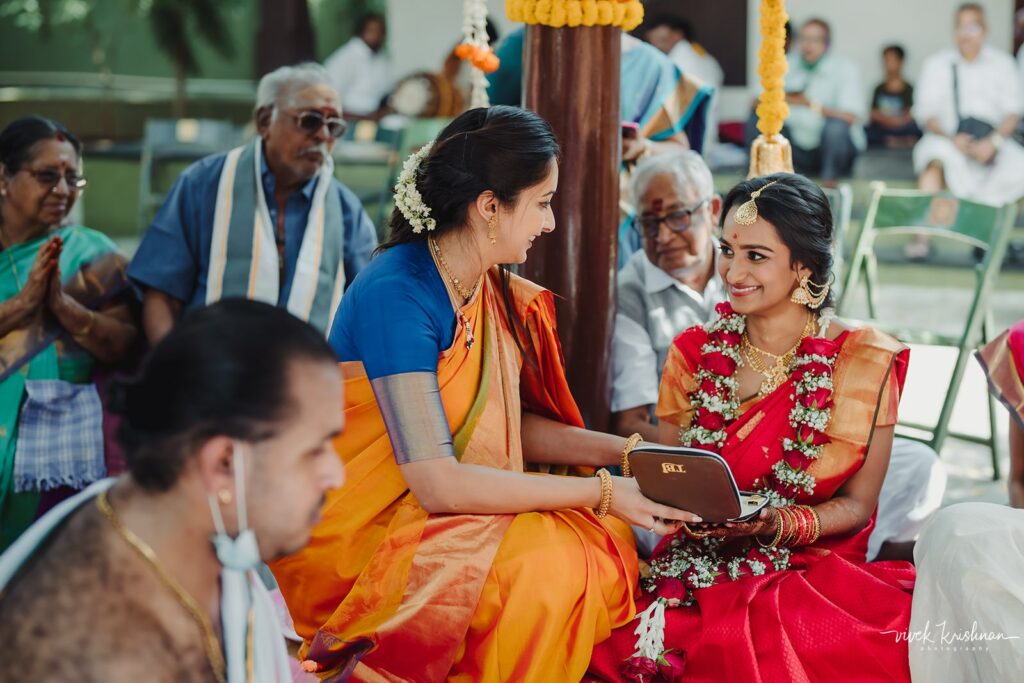
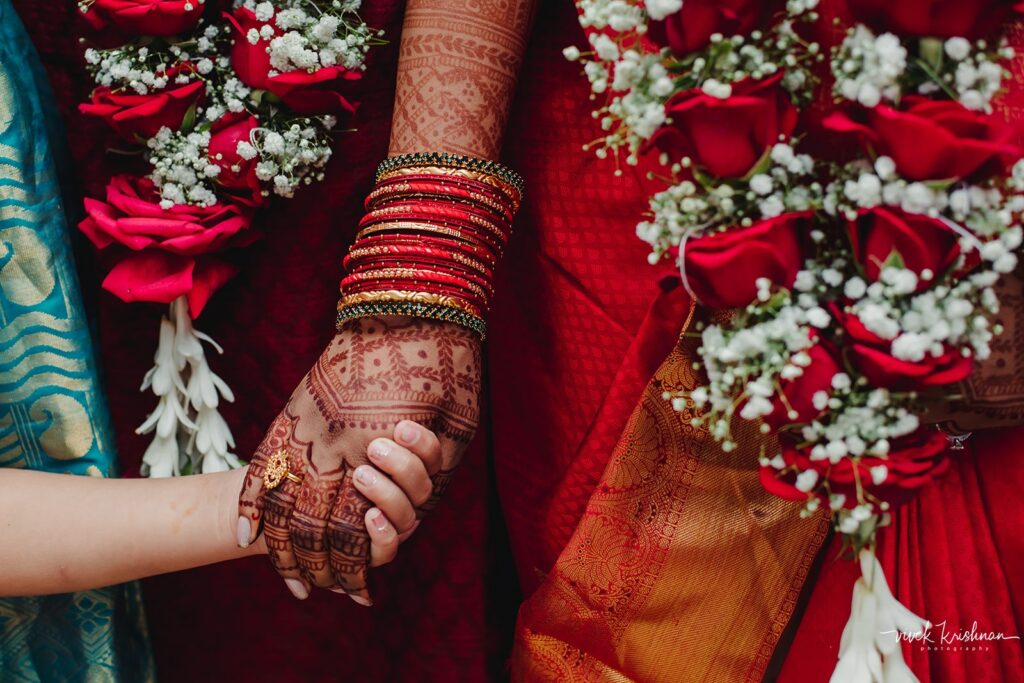
Main-day Wedding Rituals
Mangala Snanam
The Mangala Snanam is an important tradition observed at the bride and groom’s homes. During this ceremony, the couple is adorned with a paste created from a blend of auspicious ingredients, including turmeric, sandalwood, and kumkum. This is then followed by a cleansing water shower, symbolizing the purification of their souls and a fresh beginning.
The Mangala Snanam marks the initiation of the primary wedding day rituals. The bride and groom are elegantly attired in garments crafted from silk and cotton, enhancing the significance and beauty of the occasion.
Gauri Puja
This ritual is followed in some traditions where the bride seeks blessings from Gauri, the goddess of purity and virtue. She performs a puja in the goddess’s name to bless her with a happy marriage.
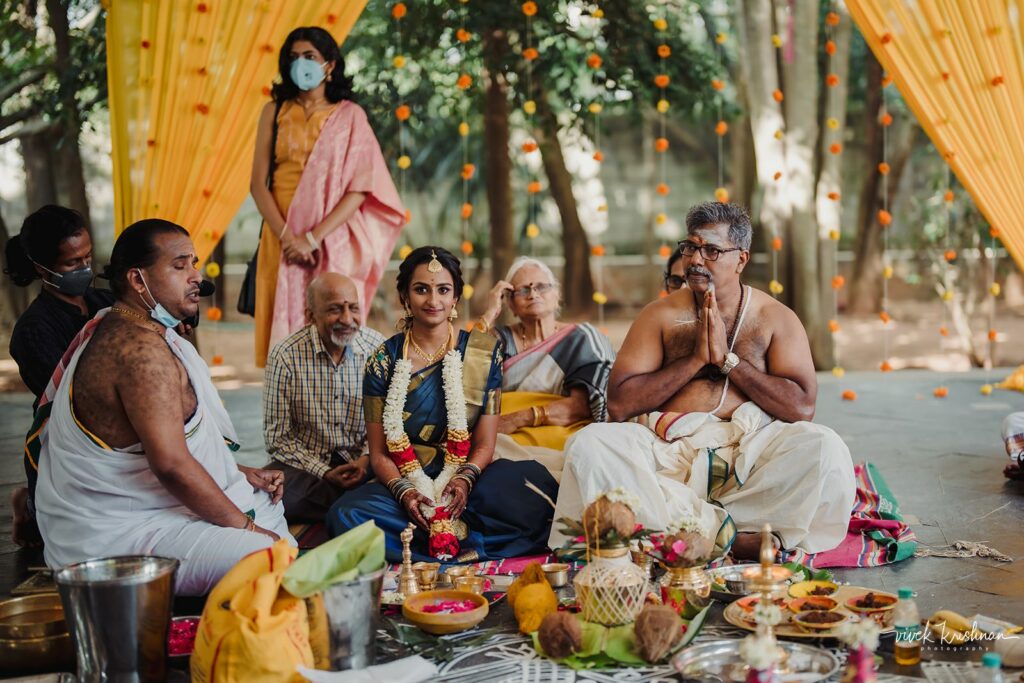
Kashi Yatra
To get on with the rituals of the wedding, the Kashi Yatra, is an enactment by the groom. He downplays his intention to marry and sets out on his journey to Kashi. The bride’s father intervenes to offer his daughter’s hand in marriage. The groom, convinced, goes through a transition and turns to committing to a married life.
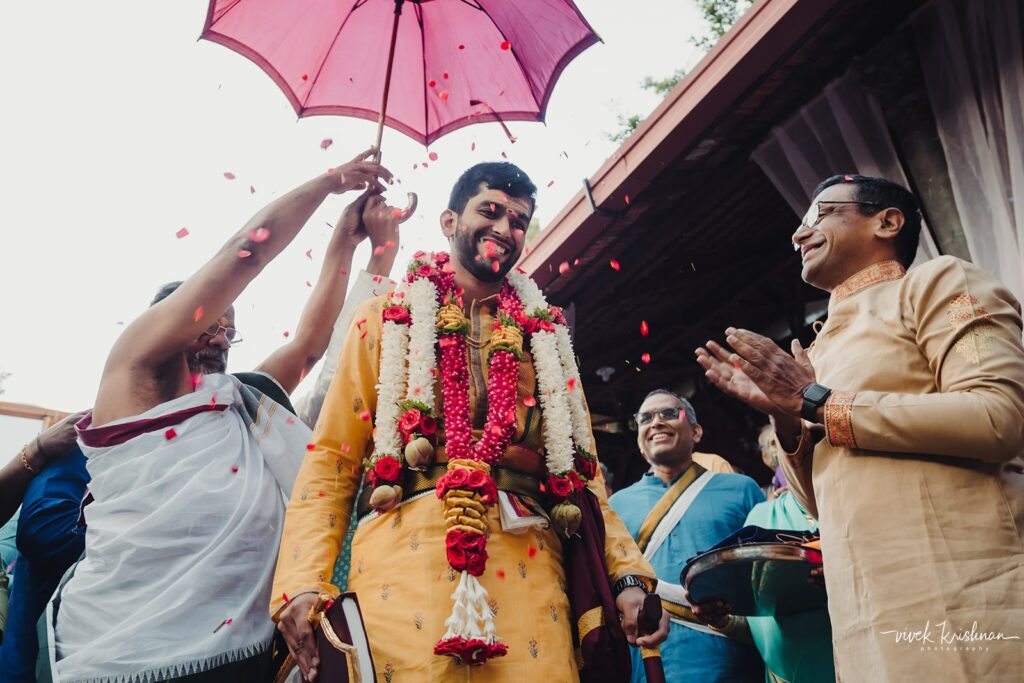
Pada Puja
The groom is greeted into the mandap to have his feet cleansed by the bride’s father. A mixture of sandalwood, milk, and kumkum in holy water is used by the soon-to-be father-in-law to give the groom’s feet a rinse.
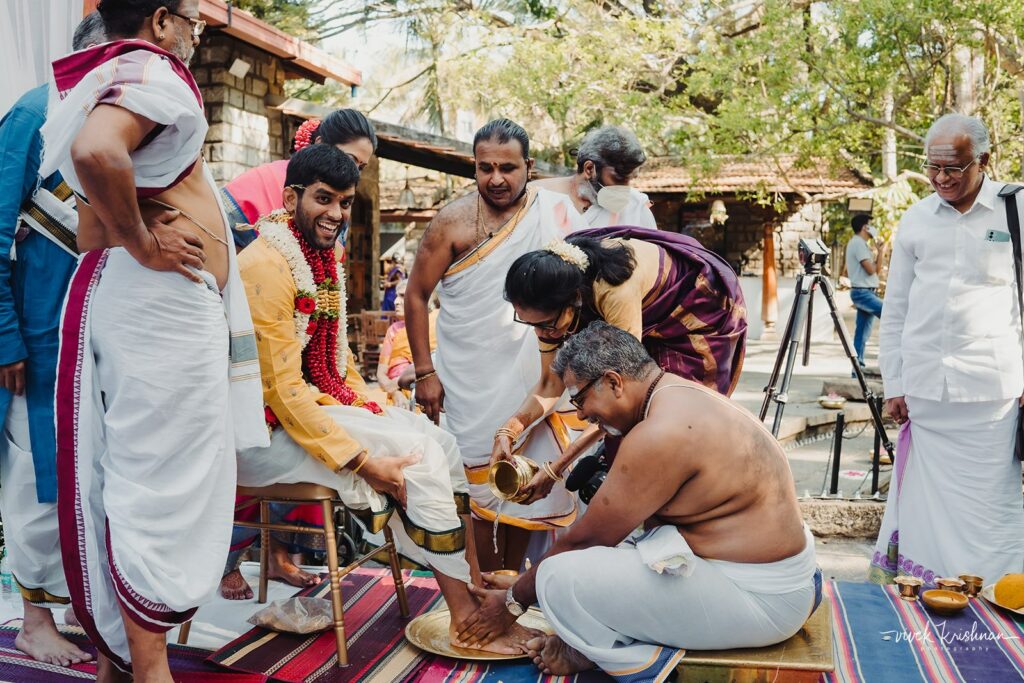
Maalai Maatral
This ritual serves as a signal for the bride’s entrance into the mandap. During this phase, the couple engages in the exchange of garlands, a practice repeated thrice. This ritual often encourages the extended family to join in, actively participating in assisting the couple in placing the garlands around each other’s necks. They also sing traditional folk songs to make the ceremony more vibrant.
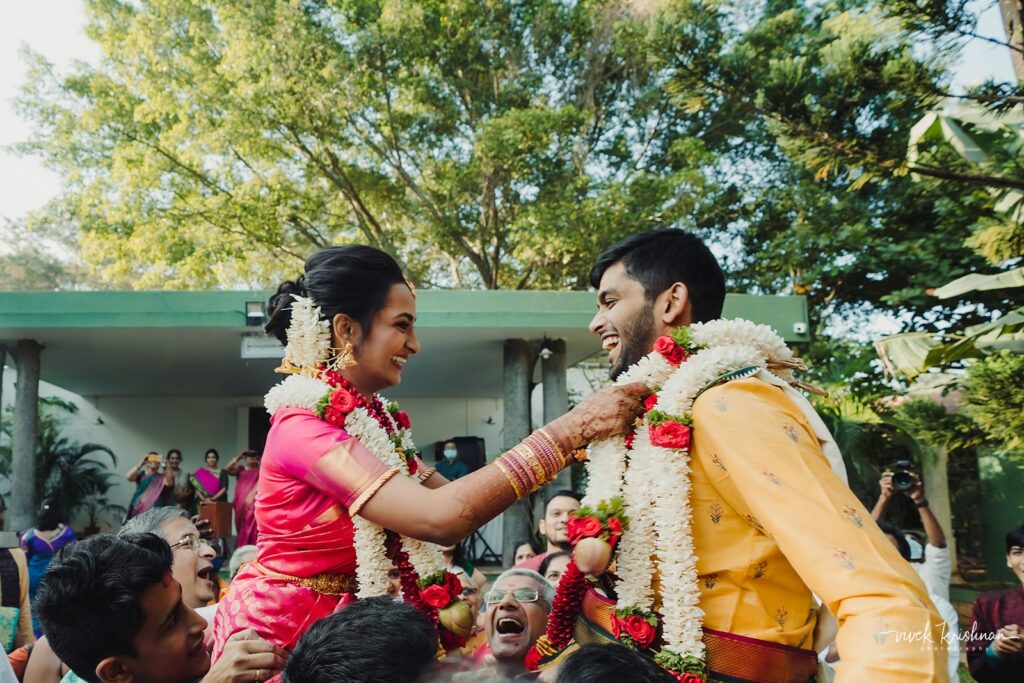
Oonjal
The Oonjal ceremony entails the couple being seated upon a swing and gently swayed. Encircled by the women from their families, traditional songs are sung, creating an atmosphere of cultural richness. During this occasion, elders offer blessings by feeding the couple a mixture of milk and banana.
They parade colored rice balls, earthen lamps, and water-filled vessels around the couple three times in both clockwise and anti-clockwise directions. The motion of the swing signifies the challenges that might arise in their journey together, while the colored rice balls are thrown at the couple from four orientations to repel negativity and adversities.
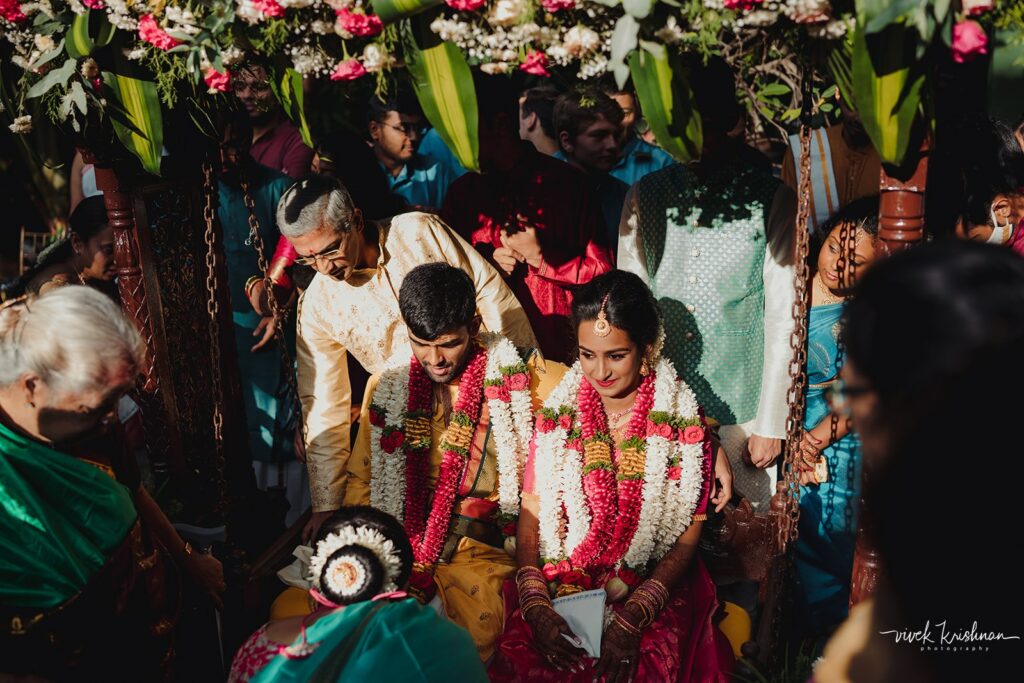
Kanyadaanam
The groom is seated on the ground, while the bride’s father, seated across from him, proceeds to wash the groom’s feet. In his lap rests the bride, and he upholds her hands, which hold a coconut. This coconut is then presented to the groom, and the bride’s mother pours holy water over it. Through this symbolic act, the parents ceremoniously entrust their daughter into the care of the groom for the rest of her life.
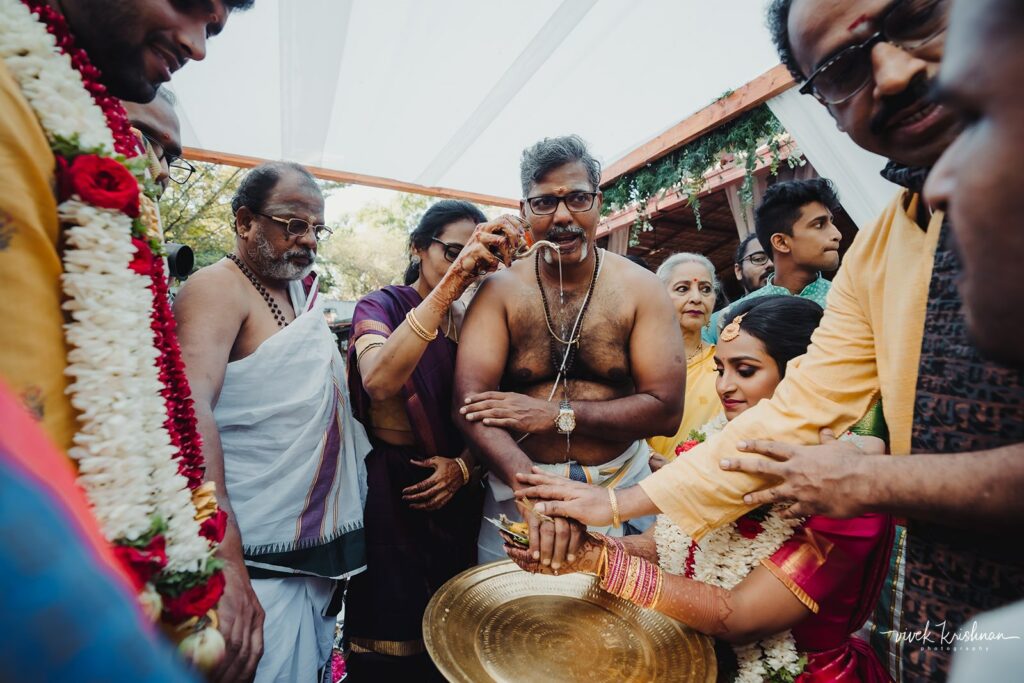
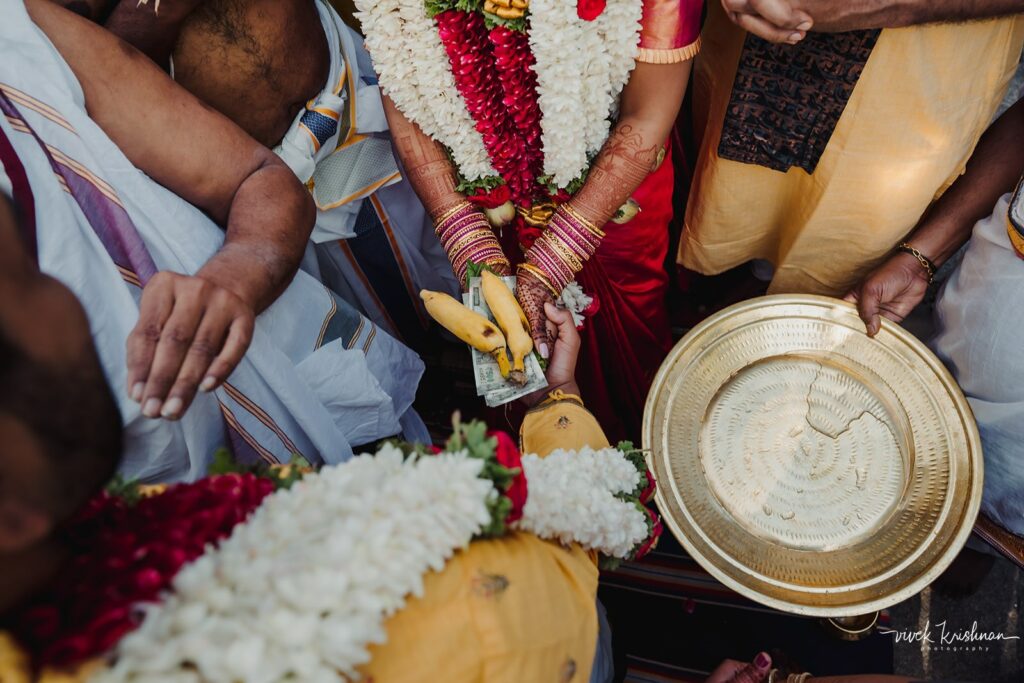
Muhurtham
Following the Kanyadaanam, the groom’s parents extend a warm gesture by presenting the bride with a nine-yard silk saree. As this garment is gracefully draped over her shoulders, the groom applies a mark, known as sindoor, upon her hair parting on her forehead. The thali is then presented to the groom by the priest to tie it around his soon-to-be wife’s neck. Afterward, the bride gracefully dons the new saree, undergoing a transformation that signifies her entry into her new role. The groom ties the initial two knots, while the groom’s sister intricately ties the conclusive and third knot. In some cultures, the bride is seated on the father’s lap during this ceremony.
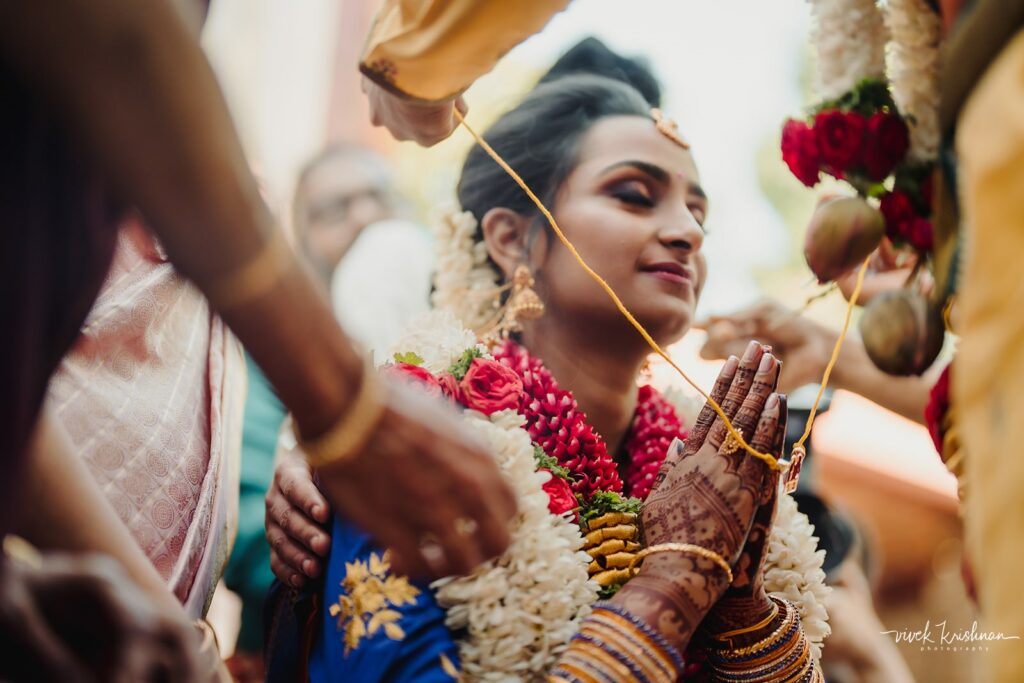
Saptapadi
Hand in hand, the bride and groom embark on a significant journey, encircling the sacred fire seven times. These verses enunciate the seven sacred pledges of matrimonial commitment.
Next, the groom holds the bride’s left toe as she steps over a grindstone. This symbolically represents the solidity of their union.
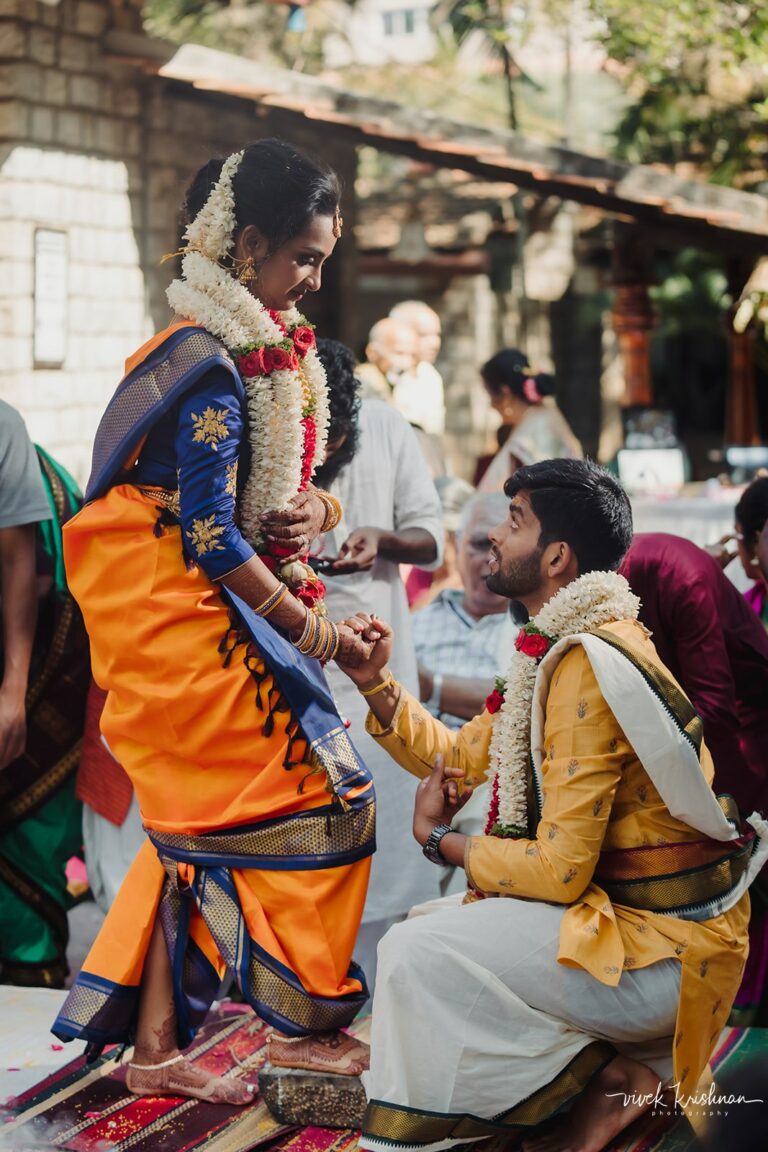
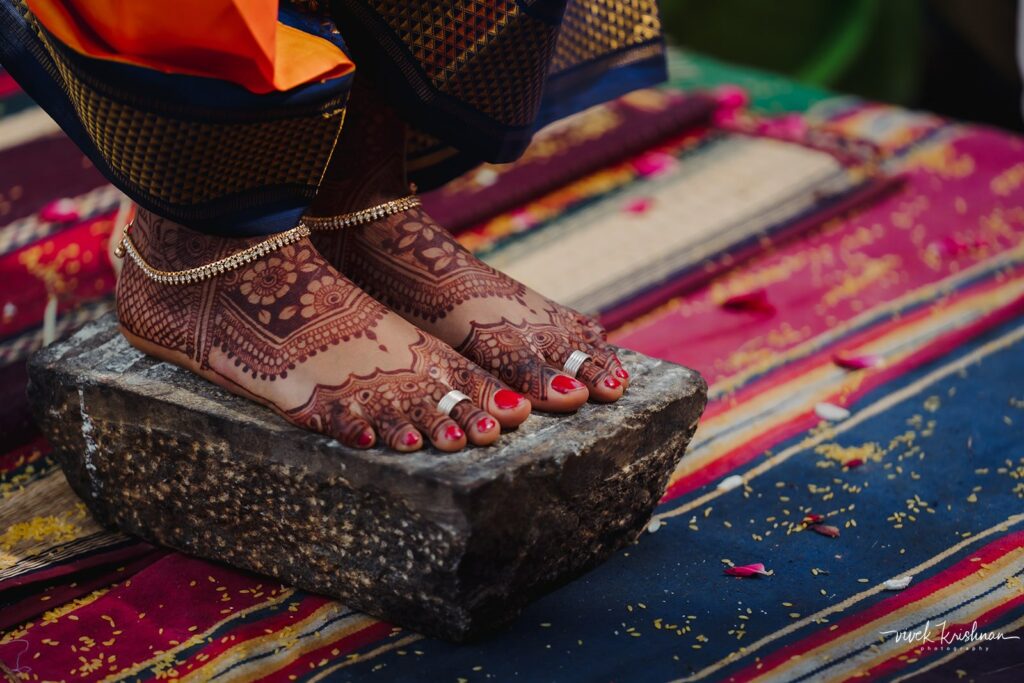
Post- wedding ceremonies
Sammandhi Maryathai
Following this, both families engage in the exchange of gifts, cementing the bonds between them. As the bride readies herself to depart from her childhood home, a farewell unfolds. Embraced by a mix of emotions, her parents and relatives offer their heartfelt goodbyes after seeking blessings from their family through prayers.
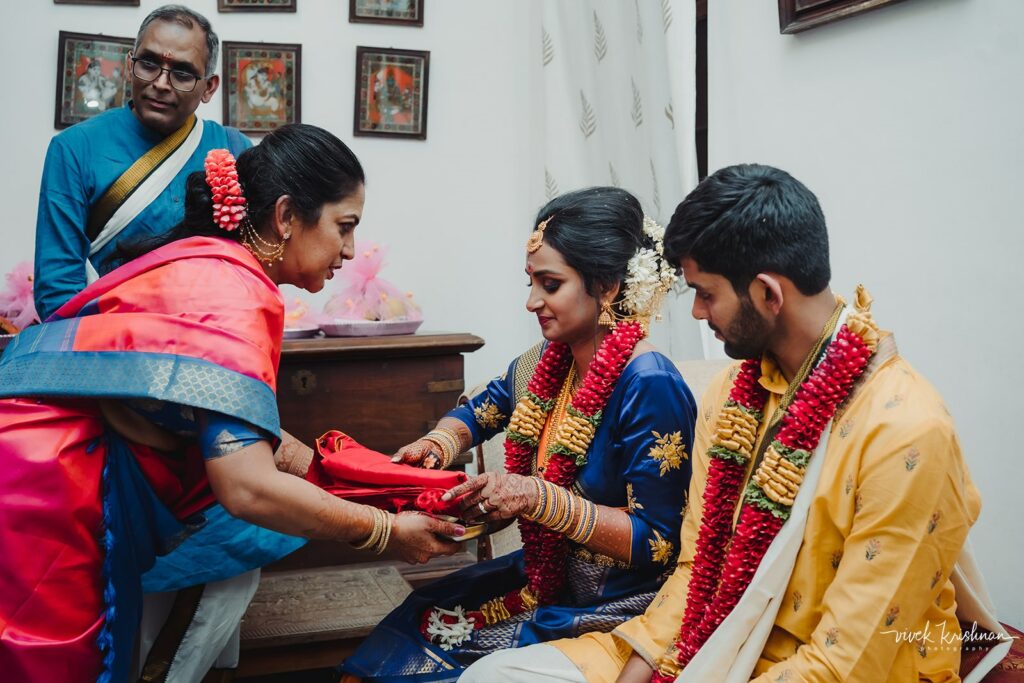
Grihapravesham
Upon the bride’s arrival at the groom’s residence, she is greeted with a heartwarming and festive reception. The mother-in-law takes part in a brief arti ritual, creating an auspicious ambiance, and guides her into the house. Here, she is guided to pay her respects to the family god, marking a significant step into her new household.
Valeyadal
This ritual signifies the official introduction of the bride to the groom’s family members, who extend their welcoming gestures through the presentation of gifts.
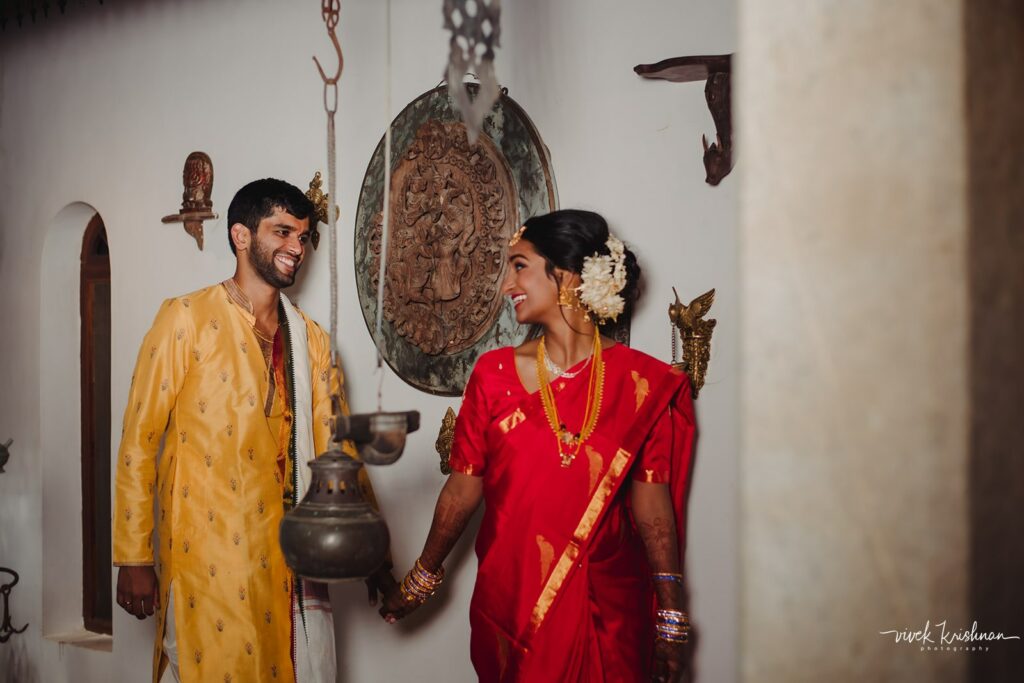
As we conclude our journey through the enchanting Tamil wedding rituals, we invite you to consider The Tales of Tradition Wedding Planners. With a blend of cultural reverence and contemporary elegance, we specialize in crafting weddings that tell unique love stories. Let us be your guides in creating a celebration that transcends tradition, making every moment an unforgettable tale of love. Explore the magic of tradition with a modern twist – choose The Tales of Tradition for your wedding tale.

